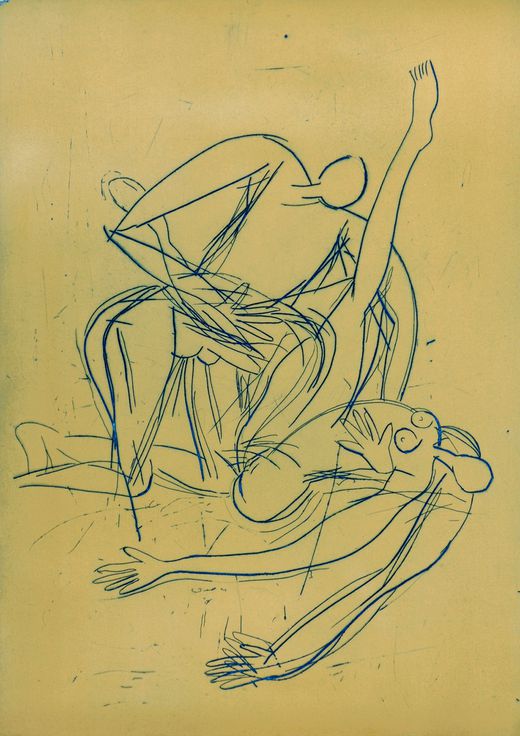

Biography
Louis Cane, French painter and sculptor, member of the Support Surface group, editor and creator of the magazine “Peinture, cahier theorique”.
In 1961, Louis Cane entered the National School of Decorative Arts in Nice, then studied for two years at the National School of Decorative Arts in Paris.
In 1967-1968, he exhibited, with Arman, Benjamin Vautier, Noël Dolla and Patrick Saytour, at the Hall des Remises in question, a new place opened by Ben in Nice, a canvas obliterated by a series of stamps, over the entire surface of paper (All-over), "Louis Cane Artist Painter". The Stamps, along with the Papiers collés (wallpapers then cut into thin strips and glued on kraft sheet) constitute the artist's first works.
For the first collective exhibition of the Supports / Surfaces group, Claude Viallat refuses the participation of Louis Cane, who then distributes in the exhibition, a theoretical text, contesting the coherence of the group, a leaflet which inaugurates a series of controversies and disputes.
The review, Peinture, cahiers théoriques, of which Cane was one of the founders, appeared in 1971, at the same time as the divergences within the Supports / Surfaces group grew. That same year, he produced his first personal exhibitions in Paris (Daniel Templon gallery and Yvon Lambert gallery) and participated in the second and third exhibition of the Supports / Surfaces group at the Théâtre de la Cité internationale in Paris in April, then in June at the theater from Nice.
Until 1975, Cane continued his abstract series: Canvases cut from 1970, canvases without frames, spread out on the ground, then spray-painted and folded in half, finally cut and stapled directly on the wall followed by Canes in sol from 1972, reflection on space in painting and on chromaticism, finally the Sol / Mur series from 1974-1975, black canvases saturated with color by spraying.
Between 1973 and 1978, he made numerous trips to Italy, where Raphael's frescoes in the Vatican influenced him, then studied classical painting, that of Cimabue and Giotto in particular.
In 1975 and 1976, he began to practice semi-abstract painting: first drawings on the Meninas and first canvases painted with arches, with the appearance of the angel. In 1977, he was part of the exhibition "The avant-garde 1960-1976: three cities, three collections" traveling exhibition (Marseille, Grenoble, Saint-Étienne and Center Georges-Pompidou in Paris) in which most of the artists of the Supports / Surfaces movement.
From an abstract painting to a definitive return to figuration, in 1978, Louis Cane reflected on the history of pictorial forms and embarked on an exacerbated figuration of emblematic figures, naked and quartered women, childbirth, Annunciations, lunches on the grass… Cane never hid his sources: Picasso, Manet, Monet, Goya, Rembrandt, Matisse, Frank Stella, Jackson Pollock, and finally de Kooning.
The sculpture which he approaches in 1978, is for him a familiar discipline, since his years of apprenticeship. The statues, almost exclusively feminine, revive the traditional practice of modeling, and the forms are sometimes burlesque, sometimes pathetic, with a baroque expressionism. We can cite for example the series of Meninas (inspired among others by Velasquez), or Desmoiselles on a swing.
During the construction of the new Cathedral of Évry, he made a modern cubic tabernacle. It is covered on five sides with mosaics inspired by those of the early Church. The themes of the decoration are the symbols used by the first Christians: dove, grape, bread, fish.
Louis Cane, who was a student of Decorative Arts, is also a talented furniture designer, this activity representing an important part of his artistic creation (especially in recent years).
Selected works.
Nationality
Themes




